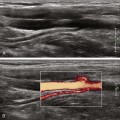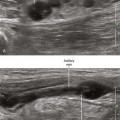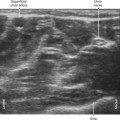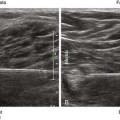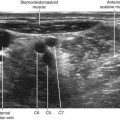6 Anisotropy
Isotropic means equal in all directions. Anisotropic implies angle dependence. The latter term has been used to indicate the change in amplitude of received echoes from a structure when the angle of insonation is changed. Anisotropy is a discriminating feature between nerves and tendons. Tendons are more anisotropic than nerves, meaning that smaller changes in angle (about 2 degrees) alter the echoes from tendons than the changes in angle (about 10 degrees) that alter the echoes from nerves. The anisotropy of nerves also is important because during interventions it can be challenging to maintain nerve visibility while manipulating the transducer to image the block needle.1
Stay updated, free articles. Join our Telegram channel

Full access? Get Clinical Tree


